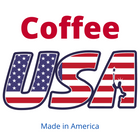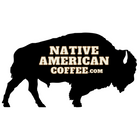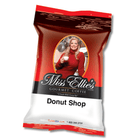Coffee cupping is the practice of evaluating coffee using a variety of techniques in order to classify the coffee according to its taste and aroma. Cupping also helps to cull out coffees that are inferior and to sort coffees by regions according to their flavors and other essential traits. Cuppers, as these tasters are called, take their jobs very seriously with a procedure that is almost ritualistic in terms of its preparation and execution.The first step in coffee cupping is to set the table up. Each session or coffee being tasted will be different in the number of coffees being cupped. It is better to taste and judge one coffee at a time to keep from getting the coffee flavors intermingled. The table should have 6-10 coffee cups set up in a triangular form with the top of the triangle being the coffee beans that are being tasted in both green bean form and in ground roasted form. These two samples should be covered with a linen to prevent cuppers from being influenced by their appearance and forming an opinion before tasting the coffee.A cup with cupping spoons should be placed in the certain of the table. These will be used to taste the coffee during the cupping process. Prepare filtered water by having it ready to boil and then pouring it over 2 tablespoons of the freshly roasted coffee in each cup. Cuppers roast and grind all of their coffee to the same standards every time so that they can have a fair cupping that is equal in all aspects except the bean itself. Before the water is added to the cups the cuppers will record their nasal observations of the ground coffee by smelling the coffee in the cups. Once the boiling water is added the aroma observations are written down again. Finally, the aroma is deeply inhaled with the nose directly over the cup after it has steeped one or two minutes and the top layer has been broken using a preheated cupping spoon.The aroma that is inhaled when the crust of the coffee is first broken is the most intense aroma the cupper will have and is described in detail for future coffee drinkers.The taste of the coffee is determined first by using a cupping spoon and taking in a spoonful of coffee in a very forceful and strong slurp. This allows the coffee to completely envelope tongue and taste buds, the back of the throat and even the nasal passage. The initial and lingering observations are recorded. Once the coffee has cooled substantially the taste test is repeated. This is due to the flavor variations that occur as the coffee cools. These variations are recorded and will be used to put together a complete flavor description of the coffee.Finally, the green coffee bean and the ground coffee are uncovered and the cupper records visual observations of the bean and the ground form.Coffee cupping is an art form that many people enjoy as a hobby and that is also important in the coffee world to categorize the many different coffee beans grown around the world. The results of coffee cupping make it possible for coffee drinkers to choose their favorite flavors without having to go in blindly hoping for the best.
Coffee, Coffee, Coffee
What is An Air Pot | Coffee Air Pots | Thermal Air Pots
What is an air pot, you ask? It may seem obvious to some, but there' a lot more to an air pot than meets the eye. The air pot is really a bit of a marvel when it comes to science and engineering. These pots are used for a lot of purposes and they are perfect for high volume situations where you have to transport coffee safely in something other than a sloshing open topped pot.While air pot features may differ, the basic principle is the same. Every air pot has two important parts – the outside shell, which can be of any material such as plastic, aluminum or stainless steel and the inside thermal chamber that keeps the coffee hot. Between these two sections is an air chamber that helps keep the coffee warm by creating a layer of insulation between the thermal chamber and the outside.The thermal chamber helps the heat of the coffee re-circulate as steam, in and around the air pot. As the thermal chamber becomes warm from the coffee, it also heats up the trapped air between the chamber and the exterior, adding additional insulation.At the top of the pot is another important secret. Obviously heat rises so you want to keep as much heat in the air pot as possible. A sealed lid is needed to keep the heat in.On smaller air pots, this may simply be a screw top lid that can be loosened enough to let the coffee flow through the spout. On larger models of air pots, the lid is latched down. At the top of it is a plunger that creates enough of a pressure difference that the coffee is pumped up the pot and into your cup.
Water Filters | Filtered Water | How to Filter Water
Water filters can be an important part of your coffee brewing, because water that doesn't taste good will leave you with coffee that doesn't taste good. And nobody wants that.By filtering out the chlorine, fluoride, and impurities, you are going to get a cleaner-tasting cup of coffee. You could always brew your coffee with bottled water, but most people just get a water filter instead.The simplest option is to use a coffee maker that has a water filter already built-in as part of the machine. You don't have to think about it though it does have a limited use and you can only filter water right inside the coffee maker. Many good quality coffee makers have these now, such as Cuisinart, Braun, Krups and Capresso. Single-serve or pod machines like the Tassimo and the Keurig also have models with integrated water filters.They usually have an internal sensor that keeps track of how many brew cycles have passed and will let you know when you have to change the filters.If you don't want to go out and get a new coffee maker, the next best thing is to have a way to filter water before you fill up your machine. The simplest approach is to get a jug filter, like a Brita. These filters are quite inexpensive, easy to use, and give you a ready source of filtered water when you need it (for coffee making, or anything else). Jug filters have a dual cannister structure, and the water from the top half drips down through the filter to collect in the bottom half. It can take a few minutes for the filtering to finish but it's generally a pretty quick process. Just remember to fill it back up when the filtered water runs low. Then you will have clean water for brewing coffee. Brita is one of the most common brands of jug filter, but not the only one. Pur makes several good ones as well. They come in various sizes and shapes for easy fridge storage, and many have indicators to tell you when to change the filters.For people who really prefer to drink filtered water, you can get larger systems to accommodate higher filtering volumes. Small filter units can be attached to your faucet so that it filters all the water that flows out, and under-sink models are another option if you want filtered water on tap. Not all water filters will clean up your water to the same degree. Most have a charcoal base to them, to neutralize the chlorine and the bad flavors, but these filters won't remove any dissolved minerals. So if you have a problem with hard water, a standard water filter won't help very much. You'll need a water softener for that. When you have clean and good-tasting water, you may not feel the need to have a water filter when it comes to brewing coffee, but the option is always there. You might be surprised at the difference the water makes from one cup to the next once you try it.
The Lure Of The Coffee Shop | Why People Love Cofee Shops
The lure of the coffee shop is many things to many people and at the same time is an undeniable call that many people answer every day. This lure is what has made the coffee shop surge in popularity in the past ten to fifteen years and continues to grow today. There are many different factors that lead people to the coffee shop, some work together while others work in combination to attract people to the coffee shop every day.Coffee and coffee drinks are of course one of the main lures of the coffee shop. The coffee served in these shops is typically higher in quality than what is served at home. This is usually because the coffee shop has access to a wider range of coffee beans and the equipment needed to make many of the coffee drinks found in a coffee shop. This is where the convenience factor of the coffee shop becomes a selling point. Many people would prefer to save money by making their favorite coffee drink at home but don’t have the time or equipment necessary to make cappuccinos, lattes and even iced coffee drinks. The typical kitchen isn’t large enough to keep a grinder, espresso maker, milk frother and wide variety of syrups and creams needed to make the many different coffee specialty drinks that are found in the coffee shop.The lure of the coffee shop is also in its social aspect. This is the neighborhood gathering place where neighbors catch up on the local gossip and business deals are inked before heading to the office for a busy day. The daily news is discussed and caught up on through the newspapers that are available for the public to read while enjoying their morning java.






